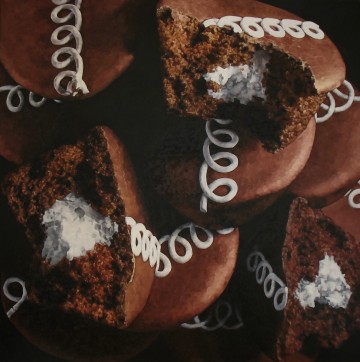
From "The Cabinet," 2010. Courtesy of Ryan Bourque.
There have been times in my short life when I’ve had the good fortune to witness something new and amazing, from births to deaths and the exhausting amount of possibilities in between. Incredibly, though far less frequent, as I bear witness I am momentarily granted insight, and I become aware of how whatever I’m experiencing engrams itself upon me by drawing some hidden, forgotten, or suppressed piece of me into the open air where I can pay it proper attention. In some cases, an image or phrase will act as a Rosetta Stone which makes sense out of my internal chaos and unifies what I once thought were disparate ideas.
Those moments of insight and clarity, fleeting though they may be, are what I enjoy talking about, and the added benefit is that talking about them keeps the moments in mind, which is where I need insight and clarity to be.
For example, I saw Redmoon Theater’s flawless production of The Cabinet, a puppetry-driven performance based on The Cabinet of Dr. Caligari, the 1920 German Expressionist film about a psych ward director who manipulates his somnambulant patient into committing murder, and two things occurred to me while witnessing this performance. First (and for the first time, really), I became acutely aware of how intricately tuned actors must be to each other – moving in unison down to the subatomic level – in order to create art; and second, I was compelled to project my own history into the spectacle. After the show, I couldn’t help but wonder how many people in Redmoon’s sold-out audience saw in The Cabinet, as I did, a snapshot of the feeling of their childhoods?
I wasn’t a sleepwalking murderer in thrall to some pudgy puppet master at ten years old, but the world as I felt it then was drab and dark. Think a Frank McCourt adaptation shot on 8mm film you found in a leaky basement that hadn’t been opened in fifty years. There was a gauzy solitude and vague sadness that I felt I inhabited, against which I employed a nearly Victorian restraint in order to squeeze myself into the appearance of what I assumed was a “happy” and “normal” childhood.
Memories I hadn’t touched in years began filling with the color, sound, and tenor of the performance, and at least a few times throughout The Cabinet I simply wasn’t present, but back in Glenside Elementary or my grandmother’s kitchen or climbing a pine tree in Muskegon, Michigan.
Which is just the beginning of the emotional reverb that The Cabinet shook from me. Perhaps it demands my attention so resolutely because my youngest daughter just turned 10, and remembering the world from that perspective – from my ten year-old height and understanding – might help me improve the view of her present world. If I can remember what fascinated me back then, maybe I can more successfully keep her fascinated. Not easy at all.
Redmoon’s performance invoked these forgotten emotional snapshots of my childhood (though it’s equally possible that I could have just invented them, I suppose, with the pallet of hindsight), and unearthing them forced me to consider my own ability as a parent, to reexamine choices I’ve made so as to improve upon them in the future. The art that I find compelling tends to function in this way; it connects me to the world and often points me in unexpected directions.
Take a big painting of cupcakes, itself an intricately tuned application of pigment to canvass, but also, oddly enough, a snapshot of a dread that I’ve skittered beneath occasionally throughout my life. Don’t get me wrong, I’m not afraid of cupcakes, but this particular painting pulled wide swaths of dark material out me, both buried in my past and ever opening to me in adulthood. That goes for the painting of waffles, too.
None of this is to say that art only moves me if it reminds me of a bad day I had as a kid (though I won’t deny random bouts of solipsism), but I always welcome anything amazing enough to shine a momentary light down the (Or)well we’ve been sinking into for the last couple (thousand) years. From my limited understanding and perspective, how we’re choosing to live often seems hopeless, and art that hitches itself in some way to some part of that hopelessness is the art I tend to love. How art attaches itself to that hopelessness intrigues me as well; the chain of memories, experiences, and information that links a painting of cupcakes to my existential dread.






Pingback: News » Art 21 Blog